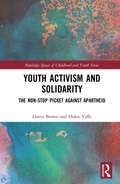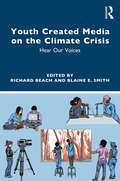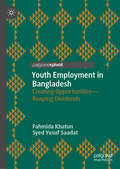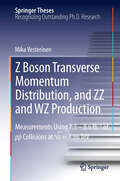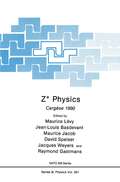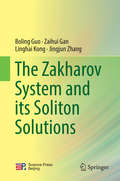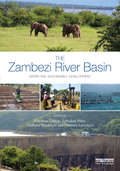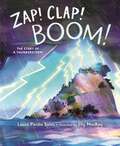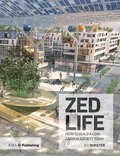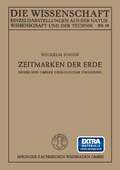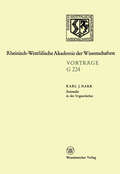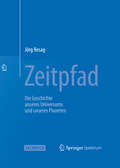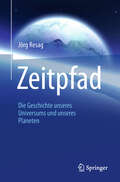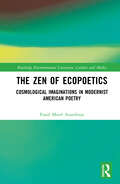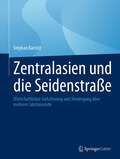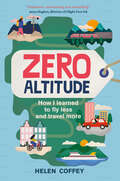- Table View
- List View
Youth Activism and Solidarity: The non-stop picket against Apartheid (Routledge Spaces of Childhood and Youth Series)
by Gavin Brown Helen YaffeFrom April 1986 until just after Nelson Mandela’s release from prison in February 1990, supporters of the City of London Anti-Apartheid Group maintained a continuous protest, day and night, outside the South African Embassy in central London. This book examines how and why a group of children, teenagers and young adults made themselves ‘non-stop against apartheid’, creating one of the most visible expressions of anti-apartheid solidarity in Britain. Drawing on interviews with over ninety former participants in the Non-Stop Picket of the South African Embassy and extensive archival research using previously unstudied documents, this book offers new insights to the study of social movements and young people’s lives. It theorises solidarity and the processes of adolescent development as social practices to provide a theoretically-informed, argument-led analysis of how young activists build and practice solidarity. Youth Activism and Solidarity: The Non-Stop Picket Against Apartheid will be of interest to geographers, historians and a wide range of other social scientists concerned with the historical geography of the international anti-apartheid movement, social movement studies, contemporary British history, and young people’s activism and geopolitical agency.
Youth Created Media on the Climate Crisis: Hear Our Voices
by Richard Beach Blaine E. SmithThis timely book provides effective methods and authentic examples of teaching about climate change through digital and multimodal media production in the English Language Arts classroom. The chapters in this edited volume demonstrate the benefits of addressing climate change in the classroom through innovative media production and cover a range of different types of media, including video/digital storytelling, social media, art, music, and writing, with rich resources for instruction in every chapter. Through the engaging ideas and strategies, the contributors equip educators with the critical tools for supporting students’ media production. In so doing, they offer new perspectives on how students can employ media and production techniques to critique the status quo, call for change, and acquire new literacy skills. As the effects of the climate crisis become increasingly visible to the youth population, this book helps foster and support youth agency and activism. Youth Media Creation on the Climate Change Crisis: Hear Our Voices is a necessary text for students, preservice teachers, and educators in literacy education, media studies, social and environmental studies, and STEM education. The eBook+ version of the text features embedded audio and video components as well as interactive links to reflect the multimodal nature of students’ work, spotlighting how youth media production supports the development of students’ critical literacy skills and shapes their voices and identities.
Youth Created Media on the Climate Crisis: Hear Our Voices
This timely book provides effective methods and authentic examples of teaching about climate change through digital and multimodal media production in the English Language Arts classroom. The chapters in this edited volume demonstrate the benefits of addressing climate change in the classroom through innovative media production and cover a range of different types of media, including video/digital storytelling, social media, art, music, and writing, with rich resources for instruction in every chapter. Through the engaging ideas and strategies, the contributors equip educators with the critical tools for supporting students’ media production. In so doing, they offer new perspectives on how students can employ media and production techniques to critique the status quo, call for change, and acquire new literacy skills. As the effects of the climate crisis become increasingly visible to the youth population, this book helps foster and support youth agency and activism. Youth Media Creation on the Climate Change Crisis: Hear Our Voices is a necessary text for students, preservice teachers, and educators in literacy education, media studies, social and environmental studies, and STEM education. The eBook+ version of the text features embedded audio and video components as well as interactive links to reflect the multimodal nature of students’ work, spotlighting how youth media production supports the development of students’ critical literacy skills and shapes their voices and identities.
Youth Employment in Bangladesh: Creating Opportunities—Reaping Dividends
by Fahmida Khatun Syed Yusuf SaadatThis book brings together pioneering and evidence-based research that focuses on youth employment—one of the foremost development challenges of our time—and fills a critical research and knowledge gap alongside consolidating existing relevant literature. Comprehensive in scope, the book provides an overview of trends in youth employment in Bangladesh, empirically analyses the determinants of youth unemployment, covers relevant economic theory, and recommends policy measures for employment creation in Bangladesh. The new evidence from Bangladesh on the aforesaid issues will inform relevant and concurrent policy discourse, add value to related research in the field, and inspire future research. The insights gathered through this study will serve as an important lesson for other developing countries on what works and what does not in policy-making.
Z Boson Transverse Momentum Distribution, and ZZ and WZ Production: Measurements Using 7.3 – 8.6 fb–1 of p¯p Collisions at √s = 1.96 TeV (Springer Theses)
by Mika VesterinenThis work develops novel data analysis techniques enabling aspects of the Standard Model of particle physics to be tested with unprecedented precision using data from the DZero experiment at the high energy “Tevatron” proton-antiproton collider at Fermilab, Chicago. Vesterinen's measurements of the transverse momentum of Z bosons using the novel variable φ* have exposed deficiencies in the current state-of-the-art theoretical predictions for vector boson production at hadron colliders. These techniques are now being used in the experiments at CERN’s Large Hadron Collider (LHC) and have stimulated considerable interest in the theoretical particle physics community. Furthermore, Vesterinen's measurements of the cross sections for the production of pairs of vector bosons (WZ and ZZ) are to date the most precise ever made.
Z° Physics: Cargèse 1990 (Nato Science Series B: #261)
by Maurice Lévy Jean-Louis Basdevant Maurice Jacob David Speiser Jacques Weyers Raymond GastmansProceedings of a NATO ASI held in Cargese, France, August 13--25, 1990
The Zakharov System and its Soliton Solutions
by Boling Guo Zaihui Gan Linghai Kong Jingjun ZhangThis book focuses on the theory of the Zakharov system in the context of plasma physics. It has been over 40 years since the system was first derived by V. E. Zakharov – and in the course of those decades, many innovative achievements with major impacts on other research fields have been made. The book represents a first attempt to highlight the mathematical theories that are most important to researchers, including the existence and unique problems, blow-up, low regularity, large time behavior and the singular limit. Rather than attempting to examine every aspect of the Zakharov system in detail, it provides an effective road map to help readers access the frontier of studies on this system.
The Zambezi River Basin: Water and sustainable development (Earthscan Series on Major River Basins of the World)
by Jonathan Lautze, Zebediah Phiri, Vladimir Smakhtin and Davison SarucheraThe Zambezi river is the fourth longest in Africa, crossing or bordering Zambia, Angola, Namibia, Botswana, Zimbabwe and Mozambique. The river basin is widely recognised as one of the most important basins in southern Africa and is the focus of contested development, including water for hydropower and for agriculture and the environment. This book provides a thorough review of water and sustainable development in the Zambezi, in order to identify critical issues and propose constructive ways forward. The book first reviews the availability and use of water resources in the basin, outlines the basin’s economic potential and highlights key concerns related to climate vulnerability and risk. Focus is then devoted to hydropower and the water-energy-food (WEF) nexus, sustainable agricultural water management, and threats and opportunities related to provision of ecosystem services. The impact of urbanisation and water quality is also examined, as well as ways to enhance transboundary water cooperation. Last, the book assesses the level of water security in the basin, and provides suggestions for achieving Sustainable Development Goal (SDG) 6. Throughout, emphasis is placed on entry points for basin-level management to foster improved paths forward.
The Zambezi River Basin: Water and sustainable development (Earthscan Series on Major River Basins of the World)
by Jonathan Lautze Zebediah Phiri Vladimir Smakhtin Davison SarucheraThe Zambezi river is the fourth longest in Africa, crossing or bordering Zambia, Angola, Namibia, Botswana, Zimbabwe and Mozambique. The river basin is widely recognised as one of the most important basins in southern Africa and is the focus of contested development, including water for hydropower and for agriculture and the environment. This book provides a thorough review of water and sustainable development in the Zambezi, in order to identify critical issues and propose constructive ways forward. The book first reviews the availability and use of water resources in the basin, outlines the basin’s economic potential and highlights key concerns related to climate vulnerability and risk. Focus is then devoted to hydropower and the water-energy-food (WEF) nexus, sustainable agricultural water management, and threats and opportunities related to provision of ecosystem services. The impact of urbanisation and water quality is also examined, as well as ways to enhance transboundary water cooperation. Last, the book assesses the level of water security in the basin, and provides suggestions for achieving Sustainable Development Goal (SDG) 6. Throughout, emphasis is placed on entry points for basin-level management to foster improved paths forward.
Zap! Clap! Boom!: The Story of a Thunderstorm
by Laura Purdie SalasExplore the life cycle of a thunderstorm in this informative and engaging picture book. Morning's calm. Outside is still. A blue-forever day until . . .The real beginning of a thunderstorm happens long before the first raindrop falls. No rain yet. It's just a threat-a rising cloud, a towering plume, then . . .Follow along as the weather changes, from a blue-sky day to a brewing storm, from a brewing storm to a dazzling downpour, and from a dazzling downpour to the breathtaking moment when the sky emits a-ZAP! CLAP! BOOM! Laura Purdie Salas's dynamic text and Elly MacKay's vibrant art offer the perfect introduction to the science of weather and the forces that work together to create a storm. The next time nature puts on a dramatic thunder and lightning show, readers will be ready to find a cozy spot near a window and watch the storm unfold. An author's note delves deeper into the science of thunderstorms.
Zap! Clap! Boom!: The Story of a Thunderstorm
by Laura Purdie SalasExplore the life cycle of a thunderstorm in this informative and engaging picture book. Morning's calm. Outside is still. A blue-forever day until . . .The real beginning of a thunderstorm happens long before the first raindrop falls. No rain yet. It's just a threat-a rising cloud, a towering plume, then . . .Follow along as the weather changes, from a blue-sky day to a brewing storm, from a brewing storm to a dazzling downpour, and from a dazzling downpour to the breathtaking moment when the sky emits a-ZAP! CLAP! BOOM! Laura Purdie Salas's dynamic text and Elly MacKay's vibrant art offer the perfect introduction to the science of weather and the forces that work together to create a storm. The next time nature puts on a dramatic thunder and lightning show, readers will be ready to find a cozy spot near a window and watch the storm unfold. An author's note delves deeper into the science of thunderstorms.
ZEDlife
by Bill DunsterThe argument for low-cost, zero-energy, zero-waste architecture has never been timelier, while the mainstream has largely abandoned or neglected this agenda: in the UK the recent mandatory zero-carbon performance targets for new homes have been postponed or forgotten at a time when thousands of new homes will be built, and there is already a shortage of electric generating capacity. This book offers a forceful challenge to the current addiction to overconsumption of natural capital and energy, and provides workable, sustainable solutions for zero-carbon, zero-waste design.
ZEDlife
by Bill DunsterThe argument for low-cost, zero-energy, zero-waste architecture has never been timelier, while the mainstream has largely abandoned or neglected this agenda: in the UK the recent mandatory zero-carbon performance targets for new homes have been postponed or forgotten at a time when thousands of new homes will be built, and there is already a shortage of electric generating capacity. This book offers a forceful challenge to the current addiction to overconsumption of natural capital and energy, and provides workable, sustainable solutions for zero-carbon, zero-waste design.
Zeitmarken der Erde: Grund und Grenze geologischer Forschung (Die Wissenschaft #98)
by Wilhelm SimonZeitmaße in der Urgeschichte: 221. Sitzung am 20. April 1977 in Düsseldorf (Rheinisch-Westfälische Akademie der Wissenschaften #224)
by Karl J. NarrZeitpfad: Die Geschichte unseres Universums und unseres Planeten
by Jörg ResagUnser Wissen über die Vergangenheit des Universums und unseres Planeten hat in den letzten Jahrzehnten enorm zugenommen. Sowohl in der Kosmologie und Astronomie als auch in der Biologie und den Geowissenschaften wurden große Fortschritte erzielt, die sich mittlerweile zu einem umfassenden und detailreichen Gesamtbild zusammenfügen.Moderne Teleskope und Satelliten schauen tiefer ins Weltall als jemals zuvor und ergründen damit zugleich die ferne Vergangenheit des Universums. Fortschritte in der Physik ermöglichen es, den Lauf unserer Welt immer weiter in Richtung Urknall zurückzuverfolgen und vermitteln sogar eine Vorstellung davon, was den Urknall selbst ausgelöst haben könnte.Zugleich gelingt es den Geowissenschaften, die Vergangenheit unseres Planeten immer genauer zu entschlüsseln, während neue Fossilfunde und molekularbiologische Analysen ein immer präziseres Bild von der Evolution des Lebens zeichnen.Das durchgängig vierfarbige und reich illustrierte Buch von Jörg Resag stellt dieses moderne Gesamtbild umfassend dar und lädt den Leser zu einer Zeitreise ein, die beim Urknall beginnt und bis in die Zukunft des Universums führt. Diese Reise durch die Tiefen der Zeit verändert die Sicht auf unsere Welt und macht deutlich, wie wertvoll und zugleich wie kurz und zerbrechlich unsere eigene Existenz in diesem wundervollen Universum ist.
Zeitpfad: Die Geschichte unseres Universums und unseres Planeten
by Jörg ResagUnser Wissen über die Vergangenheit des Universums und unseres Planeten hat in den letzten Jahrzehnten enorm zugenommen. Sowohl in der Kosmologie und Astronomie als auch in der Biologie und den Geowissenschaften wurden große Fortschritte erzielt, die sich mittlerweile zu einem umfassenden und detailreichen Gesamtbild zusammenfügen.Moderne Teleskope und Satelliten schauen tiefer ins Weltall als jemals zuvor und ergründen damit zugleich die ferne Vergangenheit des Universums. Fortschritte in der Physik ermöglichen es, den Lauf unserer Welt immer weiter in Richtung Urknall zurückzuverfolgen und vermitteln sogar eine Vorstellung davon, was den Urknall selbst ausgelöst haben könnte.Zugleich gelingt es den Geowissenschaften, die Vergangenheit unseres Planeten immer genauer zu entschlüsseln, während neue Fossilfunde und molekularbiologische Analysen ein immer präziseres Bild von der Evolution des Lebens zeichnen.Das durchgängig vierfarbige und reich illustrierte Buch von Jörg Resag stellt dieses moderne Gesamtbild umfassend dar und lädt den Leser zu einer Zeitreise ein, die beim Urknall beginnt und bis in die Zukunft des Universums führt. Diese Reise durch die Tiefen der Zeit verändert die Sicht auf unsere Welt und macht deutlich, wie wertvoll und zugleich wie kurz und zerbrechlich unsere eigene Existenz in diesem wundervollen Universum ist.
The Zen of Ecopoetics: Cosmological Imaginations in Modernist American Poetry (Routledge Environmental Literature, Culture and Media)
by Enaiê Mairê AzambujaThis book is the first comprehensive study investigating the cultural affinities and resonances of Zen in early twentieth-century American poetry and its contribution to current definitions of ecopoetics, focusing on four key poets: William Carlos Williams, Marianne Moore, Wallace Stevens, and E.E. Cummings. Bringing together a range of texts and perspectives and using an interdisciplinary approach that draws on Eastern and Western philosophies, including Zen and Taoism, posthumanism and new materialism, this book adds to and extends the field of ecocriticism into new debates. Its broad approach, informed by literary studies, ecocriticism, and religious studies, proposes the expansion of ecopoetics to include the relationship between poetic materiality and spirituality. It develops ‘cosmopoetics’ as a new literary-theoretical concept of the poetic imagination as a contemplative means to achieving a deeper understanding of the human interdependence with the non-human. Addressing the critical gap between materialism and spirituality in modernist American poetry, The Zen of Ecopoetics promotes new forms of awareness and understanding about our relationship with non-human beings and environments. It will be of interest to scholars, researchers, and students in ecocriticism, literary theory, poetry, and religious studies.
The Zen of Ecopoetics: Cosmological Imaginations in Modernist American Poetry (Routledge Environmental Literature, Culture and Media)
by Enaiê Mairê AzambujaThis book is the first comprehensive study investigating the cultural affinities and resonances of Zen in early twentieth-century American poetry and its contribution to current definitions of ecopoetics, focusing on four key poets: William Carlos Williams, Marianne Moore, Wallace Stevens, and E.E. Cummings. Bringing together a range of texts and perspectives and using an interdisciplinary approach that draws on Eastern and Western philosophies, including Zen and Taoism, posthumanism and new materialism, this book adds to and extends the field of ecocriticism into new debates. Its broad approach, informed by literary studies, ecocriticism, and religious studies, proposes the expansion of ecopoetics to include the relationship between poetic materiality and spirituality. It develops ‘cosmopoetics’ as a new literary-theoretical concept of the poetic imagination as a contemplative means to achieving a deeper understanding of the human interdependence with the non-human. Addressing the critical gap between materialism and spirituality in modernist American poetry, The Zen of Ecopoetics promotes new forms of awareness and understanding about our relationship with non-human beings and environments. It will be of interest to scholars, researchers, and students in ecocriticism, literary theory, poetry, and religious studies.
Zentralasien und die Seidenstraße: Wirtschaftlicher Aufschwung und Niedergang über mehrere Jahrtausende
by Stephan BarisitzDieses Buch bietet einen umfassenden Überblick über die vormoderne Wirtschaftsgeschichte Zentralasiens und der Seidenstraße, die mehrere Jahrtausende umfasst. Durch die Analyse einer Fülle von Quellen und Materialien veranschaulicht es die wiederholten wirtschaftlichen Blütezeiten der Seidenstraße, in denen sie über viele Jahrhunderte Orient und Okzident verband. Nomadische Steppenreiche beherrschten häufig Zentralasien, prägten dessen Wirtschaft und beeinflussten den Handel entlang der Seidenstraße. Das Buch untersucht die Ursachen und Auswirkungen des weitreichenden Booms des Überlandhandels und erörtert gleichzeitig verschiedene interne und externe Faktoren, die zum allmählichen wirtschaftlichen Niedergang Zentralasiens und letztlichzum Ende der Seidenstraße führten. Schließlich wird erläutert, wie der wirtschaftliche Niedergang zum chinesischen und russischen Kolonialismus im 18. und 19. Jahrhundert beitrug. Detaillierte Informationen, z.B. über den Verlauf der Seidenstraße in den verschiedenen Epochen, werden in Form zahlreicher neu erstellter Karten angeboten.
Zero Altitude: How I Learned to Fly Less and Travel More
by Helen CoffeyIn recent decades, private jets have become status symbols for the world’s wealthiest, while quick and easy flights have brought far-flung destinations within the reach of everyone. But at what cost to the environment? Around the world, flying emits around 860 million metric tonnes of carbon dioxide each year, and until the outbreak of Covid-19, the aviation industry was one of the planet’s fastest-growing polluters. Now is the perfect time to pause and take stock of our toxic relationship with flying. Part climate-change investigation, part travel memoir, Zero Altitude follows Helen Coffey as she journeys as far as she can in the course of her job as a top travel journalist – all without getting on a single flight. Between trips by train, car, boat and bike, she meets climate experts and activists at the forefront of the burgeoning flight-free movement. Over the course of her travels, she discovers that keeping both feet on the ground is not only possible but that it can be an exhilarating opportunity for adventure. Her book is brimming with tips and ideas for swapping the middle seat for the open road.
Zero-Carbon Energy Kyoto 2009: Proceedings of the First International Symposium of Global COE Program "Energy Science in the Age of Global Warming - Toward CO2 Zero-emission Energy System" (Green Energy and Technology)
by Takeshi YaoEmissions of CO2 have come to be regarded as the main factor in climate change in recent years, and how to control them has become a pressing issue. The problem cannot simply be labeled a technological one, however, because it is deeply involved with social and economic issues. Since 2008, the Global Center of Excellence (COE) program titled “Energy Science in the Age of Global Warming—Toward a CO2 Zero-Emission Energy System” has been held at Kyoto University, Japan. The program aims to establish an international education and research platform to foster educators, researchers, and policy makers who can develop technologies and propose policies toward a zero-emission society by the year 2100. Setting out a zero-emission technology roadmap, Global COE promotes socioeconomic studies of energy, the study of new technologies for renewable energies, and research in advanced nuclear energy. A compilation of the lectures and presentations from the first symposium of Global COE held at Kyoto University, this book is intended to provide the impetus for the establishment of low carbon energy science to bring about harmony between mankind and the environment.
Zero-Carbon Energy Kyoto 2010: Proceedings of the Second International Symposium of Global COE Program "Energy Science in the Age of Global Warming—Toward CO2 Zero-emission Energy System" (Green Energy and Technology)
by Takeshi YaoSince 2008, the Global Center of Excellence (COE) at Kyoto University, Japan, has been engaged in a program called “Energy Science in the Age of Global Warming—Toward a CO2 Zero-Emission Energy System.” Its aim is to establish an international education and research platform to foster educators, researchers, and policy makers who can develop technologies and propose policies for establishing a CO2 zero-emission society no longer dependent on fossil fuels. It is well known that the energy problem cannot simply be labeled a technological one, as it is also deeply involved with social and economic issues. The establishment of a “low-carbon energy science” as an interdisciplinary field integrating social sciences with natural sciences is necessary. The Global COE is setting out a zero-emission technology roadmap and is promoting socioeconomic studies of energy, studies of new technologies for renewable energies, and research for advanced nuclear energy. It has also established the Global COE Unit for Energy Science Education to support young researchers as they apply their skills and knowledge and a broad international perspective to respond to issues of energy and the environment in our societies. Comprising the proceedings of the Second International Symposium of the Global COE Program, this book follows on the earlier volume Zero-Carbon Energy Kyoto 2009, published in March 2010.
Zero-Carbon Energy Kyoto 2011: Special Edition of Jointed Symposium of Kyoto University Global COE "Energy Science in the Age of Global Warming" and Ajou University BK21 (Green Energy and Technology)
by Takeshi YaoSince 2008, the Global Center of Excellence (COE) at Kyoto University, Japan, has been engaged in a program called “Energy Science in the Age of Global Warming—Toward a CO2 Zero-Emission Energy System.” Its aim is to establish an international education and research platform to foster educators, researchers, and policy makers who can develop technologies and propose policies for establishing a CO2 zero-emission society no longer dependent on fossil fuels. It is well known that the energy problem cannot simply be labeled a technological one, as it is also deeply involved with social and economic issues. The establishment of a “low-carbon energy science” as an interdisciplinary field integrating social sciences with natural sciences is necessary. The Global COE is setting out a zero-emission technology roadmap and is promoting socioeconomic studies of energy, studies of new technologies for renewable energies, and research for advanced nuclear energy. It has also established the Global COE Unit for Energy Science Education to support young researchers as they apply their skills and knowledge and a broad international perspective to respond to issues of energy and the environment in our societies. Comprising the proceedings of the Third International Symposium of the Global COE Program, this book follows on the earlier volumes Zero-Carbon Energy Kyoto 2009 and 2010, published in March 2010 and February 2011, respectively.
Zero-Carbon Energy Kyoto 2012: Special Edition of the Joint Symposium "Energy Science in the Age of Global Warming" of the Kyoto University Global COE Program and the JGSEE/CEE-KMUTT (Green Energy and Technology)
by Takeshi YaoThe Global COE is setting out a zero-emission technology roadmap and is promoting socioeconomic studies of energy, studies of new technologies for renewable energies, and research for advanced nuclear energy. It has also established the Global COE Unit for Energy Science Education to support young researchers as they apply their skills and knowledge and a broad international perspective to respond to issues of energy and the environment in our societies. This book follows on the earlier volumes Zero-Carbon Energy Kyoto 2009, 2010, and 2011.
